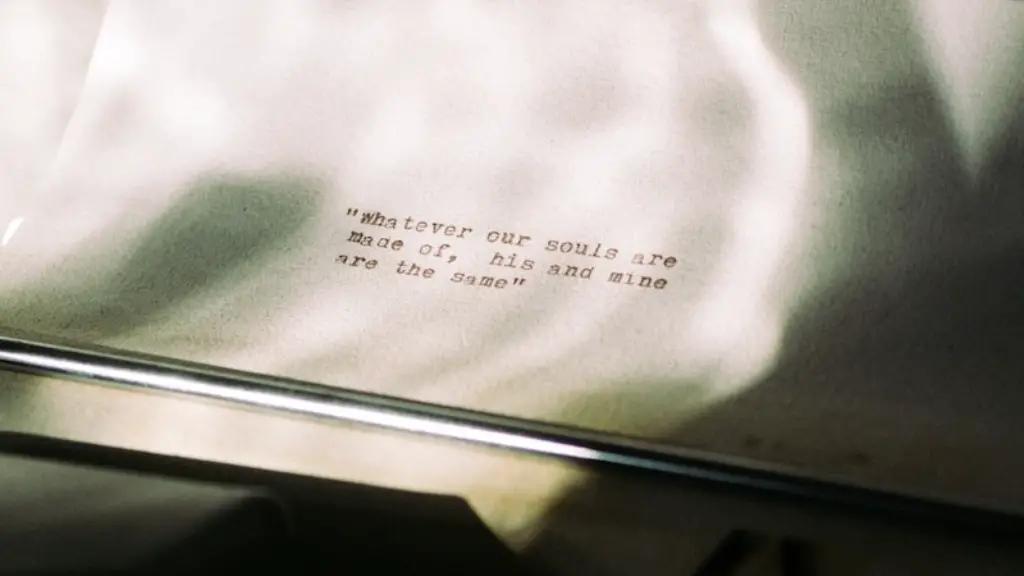Harlem is a short poem by Langston Hughes which was first published in 1951. It’s often considered to be one of his most direct and powerful works. The central question in this poem is “ What happens when dreams die?” Hughes was addressing the question of “What happens when the dreams of African Americans fail to come through?” – a timely question in the wake of segregation and anti-black violence that was occurring in America during the 1950s.
The poem “Harlem” provides a vivid and sharp answer to this question. Hugo presents four scenarios of what could happen when dreams go unfulfilled: They could “dry up like a raisin in the sun”; they could “fester like a sore and run”; they could “crust and sugar over – like a syrupy sweet”; or they could “explode”. All scenarios illustrate a dark and unfortunate outcome – dreams deferred have unpleasant consequences.
The poem also reflects on the plight of African Americans who, due to racial discrimination, were not able to achieve their dreams. The poem acknowledges the historic oppression of African Americans and their struggles to escape from it. For example, the image of a dream drying up like a raisin in the sun is reminiscent of how some African Americans were forced to abandon their dreams due to circumstances beyond their control. Similarly, the metaphor of a dream “festering like a sore” is a way of illustrating the anger and frustration felt by African Americans who were not allowed to fulfill their potential, while the “explosion” of a dream speaks to the anger and rage which can arise when a person’s hopes and aspirations are blocked.
The poem also contemplates the consequences of those who, after experiencing such oppression, give up on their dreams. The notion of a dream turning “sugary sweet” and syrupy shows how people can attempt to mask their disappointment and frustration by keeping silent and accepting their fate. Hughes also speaks about how dreams deferred can have a negative impact on the next generation, suggesting that broken dreams can lead to discouragement and apathy.
The use of figurative language combined with vivid images in this poem create a powerful expression of the reality and pain experienced by African Americans who are facing obstacles in achieving their dreams. It encourages readers to reflect on the current state of affairs and contemplate how to make meaningful change.
Cultural Context
Langston Hughes wrote “Harlem” in 1951, at a time when African Americans were struggling to overcome discrimination in the United States. The poem reflects the sentiments of African Americans who were marginalised and oppressed by a segregated and racist society. For example, many African Americans were unable to realise their dream of educational or economic advancement due to discrimination, which hindered their access to educational and employment opportunities. The poem was also influenced by the Harlem Renaissance era, in which Hughes was an instrumental figure. The Harlem Renaissance was a cultural movement during the 1920s and 1930s led by African Americans – including Langston Hughes – which sought to celebrate the unique culture and heritage of the African American community.
Critical Analysis
“Harlem” is widely regarded as one of Langston Hughes’s most influential works. It contains powerful imagery which conveys both the anguish and the resilience of African Americans who were struggling to achieve their dreams. The poem is widely viewed as a modern-day lamentation for the persistence of institutional racism, and has been widely used in popular culture and film. The theme of “dreams deferred” is deeply resonant in the United States and elsewhere, and “Harlem” has endured as an expression of the hopes and frustrations of people around the world.
Different Interpretations
Different commentators have offered different interpretations of the poem. For example, some have viewed the poem as a metaphor for growth – suggesting that a dream deferred can have positive outcomes in the future, while others have argued that Hughes’ message is more complex and ambiguous. There have also been different interpretations of the poem’s ending, particularly the line “explode.” For example, some commentators have suggested that this could be interpreted as the dreamer taking action to change the status quo, while others maintain that the line refers to a kind of self-destructive rage that arises from unfulfilled dreams.
Relevance Today
The poem “Harlem” remains relevant today, as African Americans and other minority groups continue to face discrimination and exclusion in the United States. It is an expression of the continued struggle of these communities to realise their dreams and aspirations, and the poem is still widely referred to in modern debates about racism and inequality. It is a powerful reminder of how racism can impact the lives of individuals, families, and communities, and serves as a powerful motivator for change.
Racism and Historical Inequalities
The poem’s exploration of racism and historical inequalities is still relevant today, and “Harlem” is often used in discussions related to social justice and progress. For example, the poem’s focus on the legacy of racism and segregation speaks to contemporary issues around structural inequality and systemic racism, and encourages readers to reflect on the negative impacts of continued systemic discrimination. It also raises important questions about the role of individuals and governments in addressing current inequalities, and offers potential solutions for creating a more equitable society.
Use of Figurative Language
The poem’s use of figurative language and vivid images has also been widely praised, and speaks to Langston Hughes’s skill as a poet. For example, the metaphor of a dream “drying up like a raisin in the sun” conveys the despair of deferred dreams, while the image of a dream “festering like a sore” speaks to the anger and frustration of being denied opportunities to realise one’s potential. The “explosion” of a dream is also an image of both the anger and the possibility of change, suggesting that despite the challenges, it is still possible to address issues of inequality and injustice.

